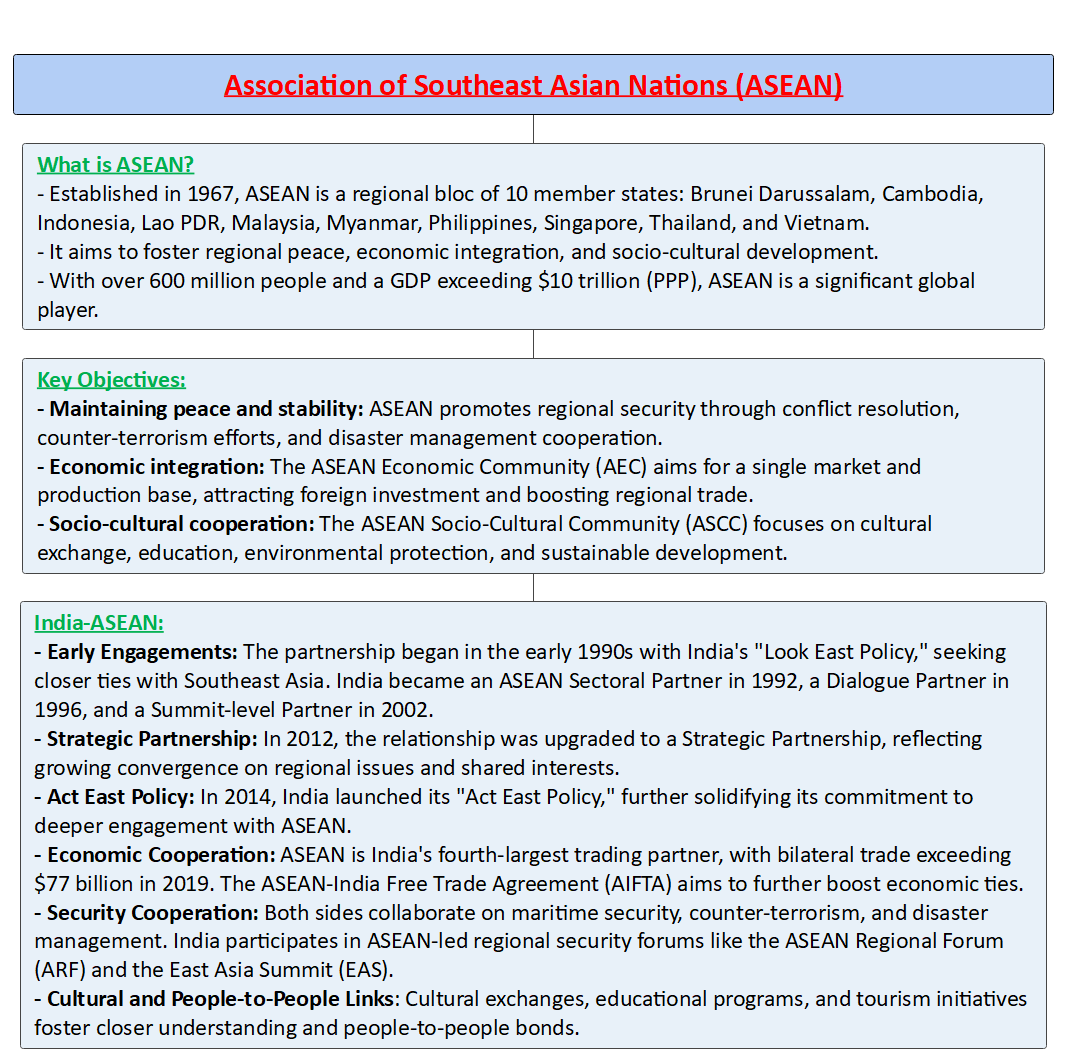Free Courses Sale ends Soon, Get It Now


Free Courses Sale ends Soon, Get It Now



Copyright infringement not intended
Picture Courtesy: https://www.analyticsvidhya.com/blog/2024/02/asean-releases-ai-governance-guide/
Context: The AI governance and ethics guidelines from ASEAN advocate a flexible and voluntary approach, emphasizing ethical and responsible AI development to balance risks and benefits, ultimately fostering economic growth and innovation in the region.
Details
Key Highlights of the Guidelines
Core Principles
Key Features
Potential Implications
Further Considerations

Conclusion
Must Read Articles:
EUROPEAN UNION’S ARTIFICIAL INTELLIGENCE ACT: https://www.iasgyan.in/daily-current-affairs/european-unions-artificial-intelligence-act#:~:text=The%20EU%20rules%20are%20expected,threaten%20people%27s%20safety%20and%20rights.
EUROPE'S MOVE FROM AI REGULATION TO INNOVATION ADVOCACY: https://www.iasgyan.in/daily-current-affairs/europes-move-from-ai-regulation-to-innovation-advocacy
|
PRACTICE QUESTION Q. While some argue for harmonized global regulations to avoid fragmentation and unfair competition, others emphasize national sovereignty and the need for tailored approaches based on specific cultural and legal contexts. How to achieve a balance between these competing pressures and ensure responsible AI development on a global scale? Answer Structure: 1.Introduce the core question and the two opposing views on global AI regulation. 2.Explain the benefits and challenges of harmonizing AI standards across countries and regions. 3.Explain the benefits and challenges of allowing national or local variations in AI governance. 4.Evaluate the trade-offs and tensions between these two approaches and propose some criteria or principles for finding a balance. 5.Conclude with a summary of the main points and a recommendation for future action or research. |
© 2024 iasgyan. All right reserved